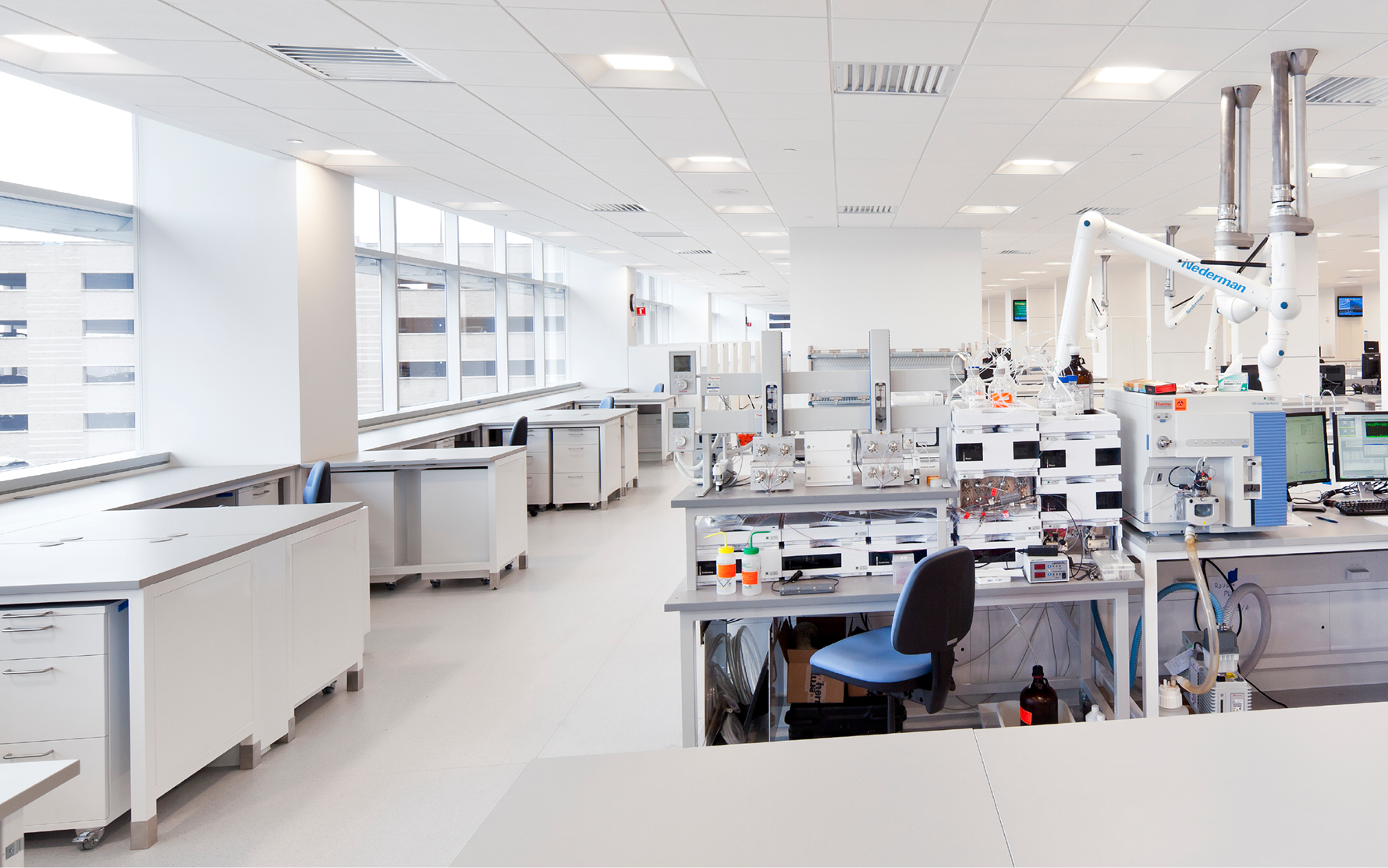Shaping Today’s Laboratories for the Future
June 21, 2018 // Recognition, Healthcare, Laboratory

Whether testing patient specimens or developing life-saving medical advancements, laboratories play vital roles in healthcare systems. Healthcare providers depend on laboratories to deliver the best possible patient care. Patients depend on laboratories to provide doctors with the proper information for diagnosis and treatment.
It is important that the design of these complex facilities best serves these functions, allowing for maximum utility of the space. Laboratory design varies immensely from project to project, but one aspect is universal: the design must serve today’s needs and adapt to changing demands over time.
Perspectus Architecture delivers expert programming, planning, and project implementation for clinical, research, and educational lab clients. Utilizing cutting-edge design and leveraging our technical capabilities, we understand the relevant issues facing labs today. Our specialized knowledge of common trends in automation, equipment, staff productivity, and workflow helps us address each lab’s unique challenges and provide efficient, sustainable environments that provide value over time.
Clinical Labs
Clinical lab processes prioritize output and efficiency in delivering information to healthcare providers. Clinical lab design emphasizes creating an environment that facilitates the maximum performance of each lab’s unique operating procedures and processes.
Designing for process and flexibility
Leading trends in the design of clinical labs focus on increased automation and lean workflows. It is vital that labs can evolve with implementing continuous improvements in their processes.

We design flexible spaces to accommodate for future growth, processes, and technological advancements. Perspectus took this long view when designing the Cleveland Clinic’s Robert J. Tomsich Pathology & Laboratory Medicine Institute (PLMI), completed in 2011. Now years later, the building is accommodating proposed renovations as it was designed to do – with flexibility in responding to lean workflow improvements and an increase in testing volume.
Designing a space that allows for expansion of automation to process and analyze rising numbers of patient specimens increases efficiency, minimizes mistakes, and reduces repetitive manual work.
“A big trend in all the clinical labs is automation. It is a robotic system where you send the sample through and multiple tests can be done on it. The results are shown via computer; it’s not just individual technicians running the tests,” says Vlad Novakovic, Principal and Laboratory Studio Lead at Perspectus Architecture, “It’s less hands, all automated.”

Another key focus in lab design is implementing lean principles and practices. One example of this is designing labs to minimize steps and eliminate waste so that the workflow is as efficient as possible.
Waste is defined as anything not adding value to a process. For example, if a workspace requires a technician to take an extra step when they only need to turn and grab something, our design process to eliminate those extra steps that are a source of “waste.”

This was particularly important when Perspectus was designing a new primary clinical laboratory for Health Network Laboratories in Allentown, PA. Tasked with converting an old call center into a clinical laboratory, we spent time meeting with the users to thoroughly understand their workflow processes. This informed the design of the new space that is optimized for their workflows and the elimination of wasted steps. For instance, the departments with the highest volumes are positioned closest to incoming specimens. A robot moving on a carefully planned path distributes specimens efficiently without interrupting lab technicians.
Research Labs
While clinical labs are directly tied to current patients, research labs are linked to cures and medical advancements for future patients. Through thoughtful, rigorous design, Perspectus Architecture is creating spaces where doctors and researchers can investigate new treatments and cures for diseases.
Designing for flexibility and collaboration
Trends in research lab design are centered on creating spaces that allow for flexibility and improve collaboration among departments.
Many institutions are hindered by the inefficiency of decentralized spaces – various departments conducting similar research, but spread out across different buildings or floors.
“As they’ve grown into their facility over several years, they’re realigning departments with a common research focus. This also means reallocating spaces to right-size their needs as research labs grow and contract,” says Bradley Fink, Project Director at Perspectus Architecture.
Perspectus is working with our lab clients to bring researchers together while also providing common spaces with shared, centralized equipment universal to their research. Designing the environments to be flexible based on the ever-changing needs of researchers is critical. For example, while the sink and walls are in a fixed position, benches or ceiling electrical outlets can be reconfigured to accommodate other research or equipment.
“There is a focus on re-organizing based on types of research, but also grouping like-minded researchers in direct proximity. Shared common space promotes more interaction, more collaboration and can accommodate more research,” says Novakovic.
This focus on creating spaces that can evolve over time and foster interaction ultimately provides more efficient operations and has the added benefits of increased collaboration. As leaders in cutting-edge laboratory design, we plan for spaces that will help our clients provide the highest quality care to patients today and tomorrow.